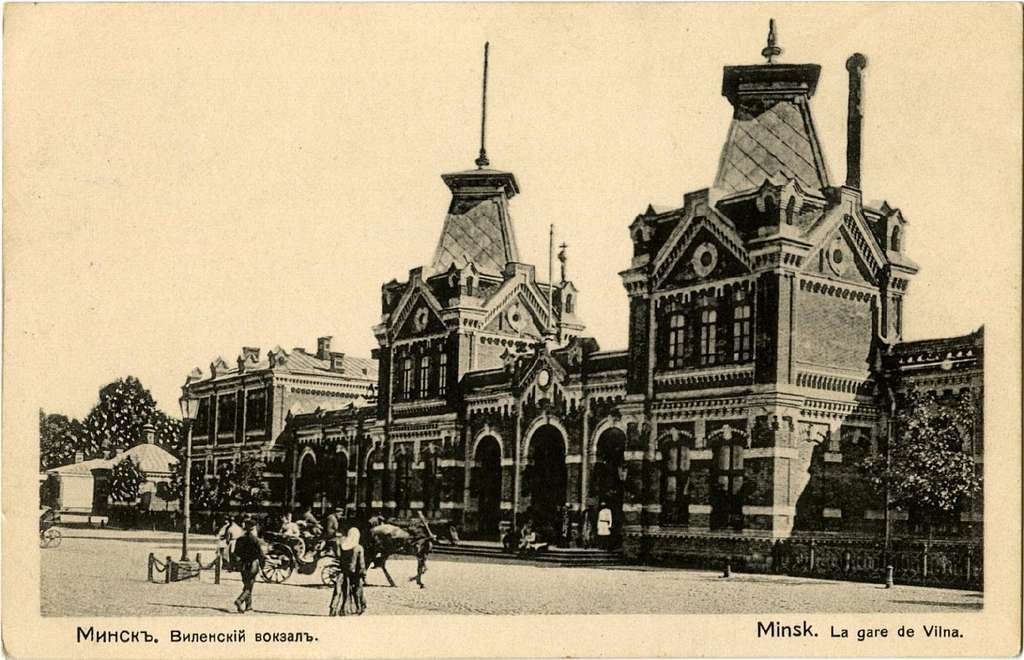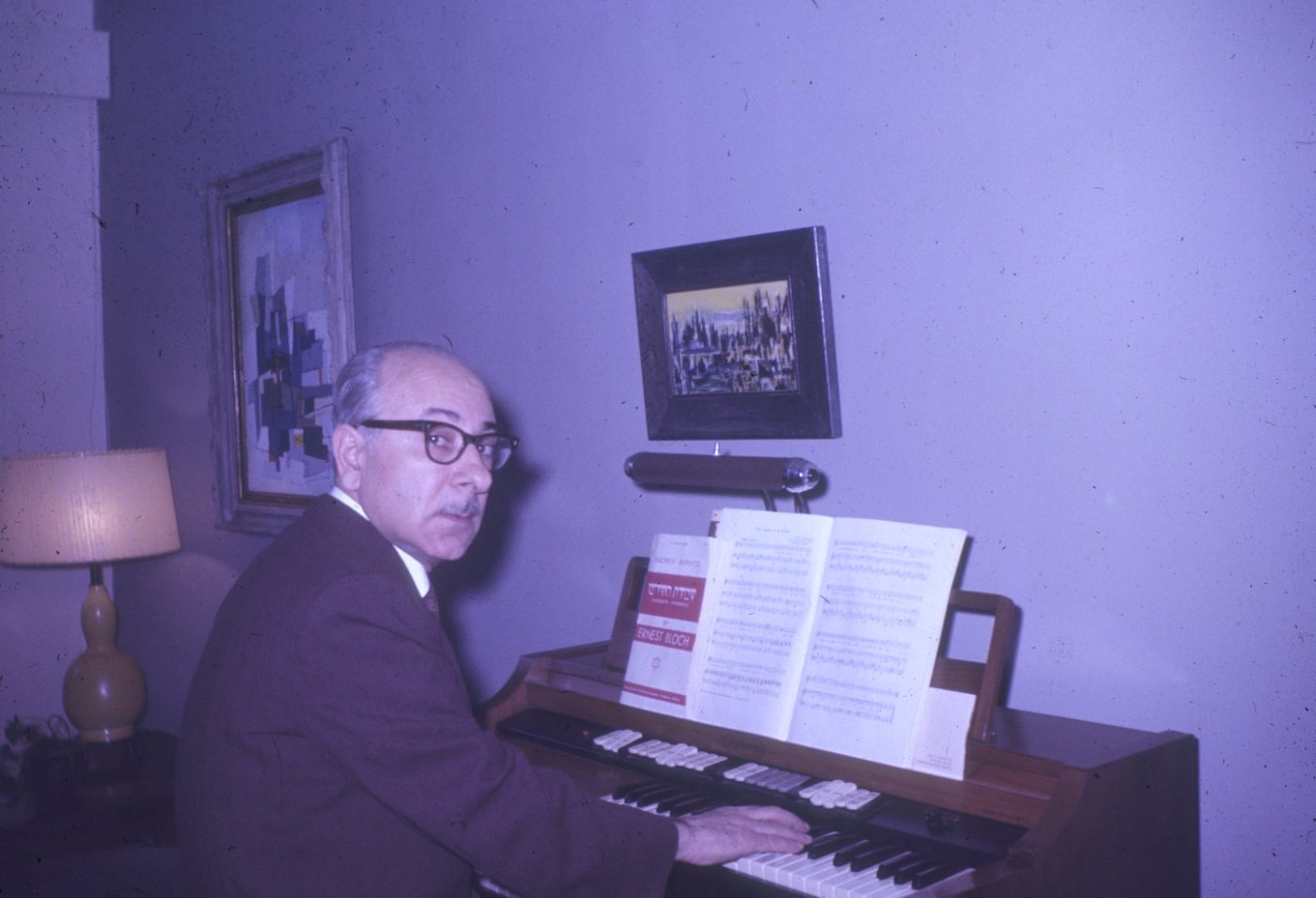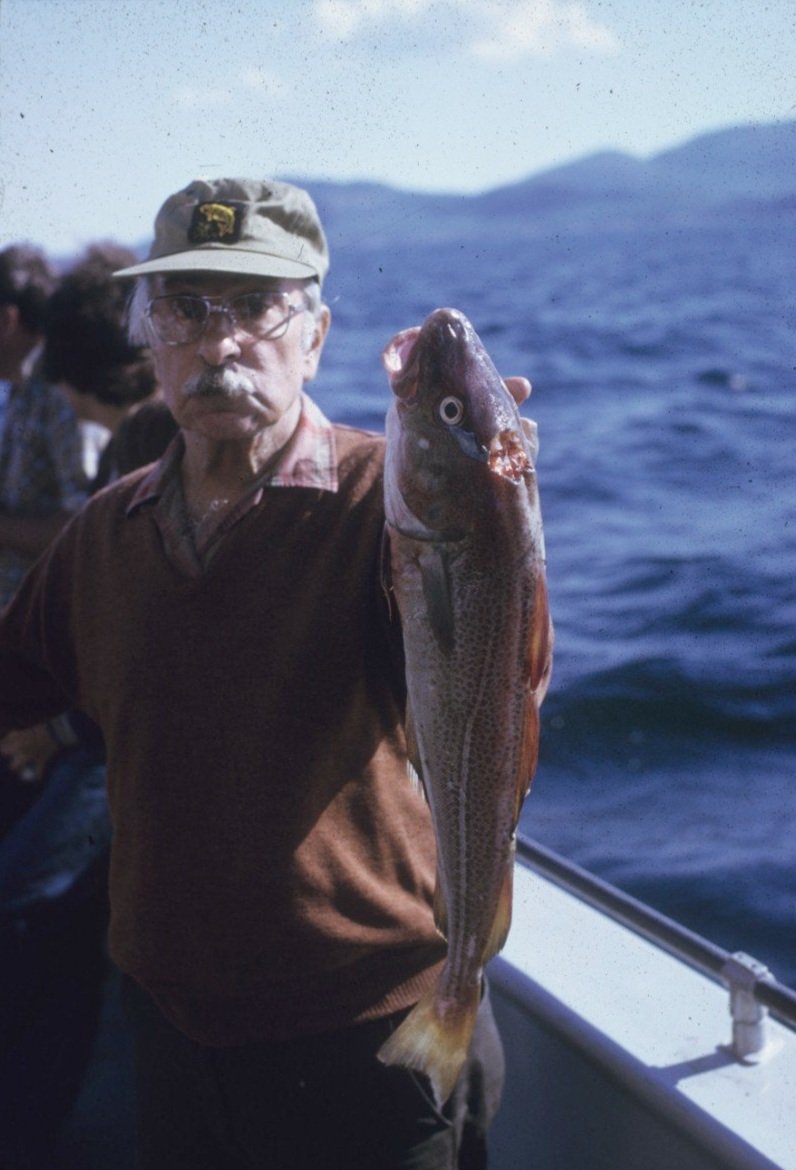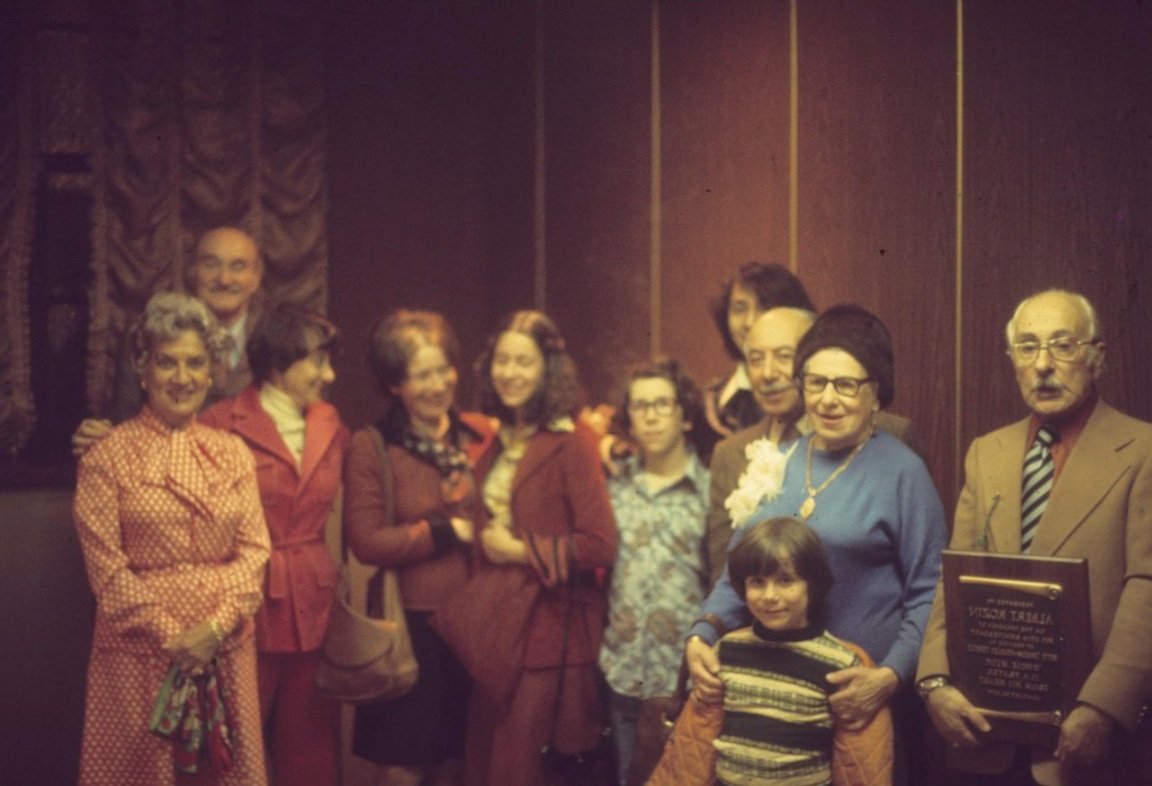
Albert Rozin (1907-1987) was a talented and dedicated composer, organist, pianist, and piano teacher. Born in Minsk, Russia, Albert and his family emigrated to America in 1923 to escape deteriorating economic conditions and rising antisemitism. He composed around 200 teaching pieces for the piano including over 100 published works, some religious music for the reform Jewish temple service, a few piano pieces in the classical tradition, and one unpublished popular song. A self-proclaimed “educational composer,” Albert was inspired to create music that took the drudgery out of lessons and motivated his students to find joy and fun in learning piano. He made a very modest living in Brooklyn, New York, primarily by teaching piano, but also as the organist in synagogues and playing for weddings. He met his wife, Rosanne Lamden, when she hired him to be the accompanist at her dance studio. They had one child, Paul, who has three children and three grandchildren.
Albert was not loud or talkative, but he was a gentle and loving soul who nurtured family and students through his music and his teaching. His sense of humor was evident to all who knew him and to those who play his music. His family and friends remember him as a quintessential mensch.
Early Years
Minsk, Russia (1871-1900) (1)
Albert (Russian name, Abram) Rozin was born in Minsk, Russia (now Belarus) in 1907 to Nathan—a professional French horn player—and Rebecca (Russian name, Rifka). He was the sixth of eight children (four boys and four girls), two of whom were half-siblings. They lived in a modest apartment, with the children sleeping in two rooms. The family did not have a piano, but Albert got access to one. He studied at the Warsaw Conservatory before coming to this country as a teenager and continued his musical education in the U.S. He was the only child in the family who learned a musical instrument, and music was not a major part of the adult life of any of his siblings. His parents were Orthodox Jewish and continued kosher practice in the USA, but Albert did not keep kosher as an adult.
Life was difficult in Russia, with deteriorating economic conditions and rising antisemitism, including pogroms. The family decided to try for a better life in America. Nathan emigrated first in 1920 (accompanied by Albert’s oldest brother, Irving, and his half-sister, Sonia) and settled in an apartment in The Bronx. Nathan then arranged for the emigration of his wife and four of his children. (David, the oldest of Albert’s siblings, decided to stay in Russia and never migrated, and his other half-sister, Zena, had already emigrated). Departure from Russia was not legal under the new Bolshevik regime, and the family had to pay to be smuggled out. The first attempt was unsuccessful, with the smuggler absconding with the payment. The second attempt in 1921 was dramatic. Rebecca left Russia in a horse-drawn carriage with 4 children: Eva (Yocheved), Albert (Abram), Norman (Nathan) and Dorothy (Dina). It was wintertime, and the five family members were dropped at the Polish border. They walked some distance in the snow where Rebecca lost her shoe at some point but, fearful of stopping, persisted and arrived at their destination with severe frostbite. They were met by a Polish family that was paid to host them in their home. The family then applied for American visas, which took over a year to be issued.
Albert, now about 14, somehow got access to a piano and arranged for some piano lessons, and he found some musical friends. The family finally received an American visa and set off for Cherbourg, France and then a ship to America. They crossed the ocean on the HMS Olympic in crowded quarters in the lower deck and arrived in New York, on Ellis Island, on September 2, 1923. Albert was 16 and he and Norman were detained by immigration police for chasing girls. (Norman proudly admitted later that he was the instigator.) In their registration interviews with immigration officials on the island, it was suggested that they change their last name to a more common American name, Rosen, along with suggestions for Americanizing their first names. Albert was the only family member to refuse to change his name from Rozin. They lived in the Bronx for some years and then moved to Bensonhurst in Brooklyn.
Life in Brooklyn
Rosanne dancing
Nathan continued to play the French horn, including performing in silent movie theaters. Albert did not return to school and never finished high school. He did, however, gain access to a piano and his first musical job in the U.S. was to improvise piano music at silent movie theaters. He is quoted as saying, “I saw a lot of films before I turned to teaching.” He also made money as an accompanist, which is how he met his wife. He applied for a job as an accompanist for a dance school run by Roseanne Lamden. Albert was hired, and eventually they married.
Albert and Rosanne lived in Brooklyn, supported primarily by Albert’s piano teaching. Albert referred to himself as an educational composer. His love for music in general was matched by his love for teaching in particular. Albert was a prolific composer, publishing over 100 pieces of music in his lifetime and composing another 100 pieces of recently discovered unpublished music, most of which will be accessible on this site.
Albert with Rosanne, and their son Paul
In the late 1940s, Albert also took a position as an organist at a reform synagogue around the corner from where he lived. Albert made a number of musical friends, who came to visit and play in their apartment, mostly vocalists including those who sang at his synagogue. Just as Albert’s friends clustered around musical interests, Rosanne’s friends were primarily left-wingers and Communists who matched her political interests. She became very active politically, while developing an interest in painting and later, ceramic arts.
On August 3, 1936, Albert and Rosanne welcomed their first and only child, Paul. Paul was an especially gifted student. He finished high school in just two years and attended the University of Chicago on a Ford Foundation scholarship for early college entrants. He graduated college at 16 years old and went on to receive a joint PhD at Harvard in biology and psychology, and complete a postdoc at the Harvard School of Public Health. In 1963, he joined the faculty of UPenn where he was a beloved teacher, researcher and specialist on disgust (lovingly called Dr. Disgust) for over 50 years.
The Music
Albert sitting at an organ.
Albert started composing piano solos for his students in the late 1920s and published his first piece, Scherzino, at his own expense in 1932. He describes the utter joy he felt at seeing his name in print in several of his articles. Although it is unclear when Albert started writing children’s teaching music, he endured many years of rejections before securing his first publication in 1954: The Puppy and His Shadow. He published two more pieces in 1954, seventeen in 1955, and eleven in 1956. He published 123 pieces between 1954 and 1987 and composed around 60 unpublished instructional pieces, seventeen vocal pieces based on Hebrew texts (three published), seven piano pieces for adults, and one popular song. His teaching music is an invaluable resource for piano teachers, each piece focusing on specific skills. The music is engaging, rife with Albert’s wit and warmth, and includes evocative titles such as I Danced with a Clown, Misty Days, Ping Pong, and Subway Rush. His instructional compositions are primarily original works, but a few are arrangements of Hebrew or Russian folk melodies or music by other composers including Mozart and, his favorite, Tchaikovsky. Beyond these two composers, Albert found inspiration in the music of Chopin, Rimsky-Korsakov, Debussy, Stravinsky, and Khachaturian.
(1) https://garystockbridge617.getarchive.net/media/miensk-vilenski-pryvakzalny-mensk-vilenski-pryvakzalny-1871-1900-4-3cf34c













